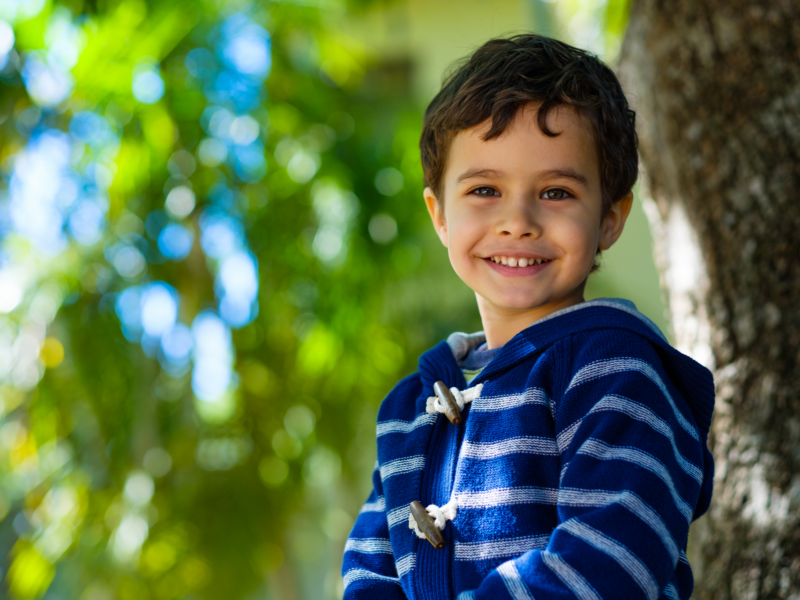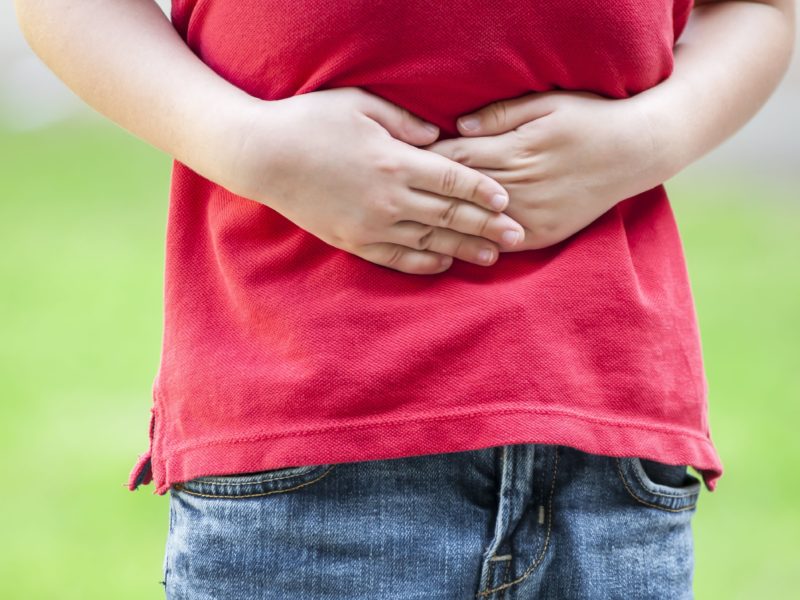Straightforward Stitch Technique Dramatically Reduces Post-Operative Anorectoplasty Complications
Straightforward Stitch Technique Dramatically Reduces Post-Operative Anorectoplasty Complications https://pediatricsnationwide.org/wp-content/themes/corpus/images/empty/thumbnail.jpg 150 150 Katie Brind'Amour, PhD, MS, CHES Katie Brind'Amour, PhD, MS, CHES https://pediatricsnationwide.org/wp-content/uploads/2021/03/Katie-B-portrait.gifThe novel para-U-stitch keeps post-operative wound dehiscence to a minimum, helping patients with anorectal malformations avoid readmission, reoperation and infection.
After recognizing a pattern of wound dehiscence and postoperative complications in patients with anorectal malformations (ARMs) repaired without a colostomy bag — meaning they stool directly through the surgical site as it heals — surgeons at Nationwide Children’s Hospital developed a technique called the para-U-stitch. Their goal was to reinforce the tissue and attempt to reduce the rate of dehiscence, which can lead to infection and continence concerns as well as significant pain and multiple reoperations. Now, they have published the results from 232 pediatric ARM surgeries using this stitch from 2015-2021, which revealed a dehiscence rate that is only a fraction of what is reported elsewhere in the literature.
The stitch is applied for all patients at Nationwide Children’s who undergo posterior sagittal anorectoplasty (PSARP) or the more complicated anorectal vaginal urethroplasty (PSARVUP) for ARM. The majority (63.4%) of the operations were performed on patients with a stoma in place. Of the 232 patients, 4 (1.7%) experienced wound dehiscence requiring operative intervention (1 without a stoma, 3 with a stoma). Patients with PSARPs had a lower dehiscence rate vs those with PSARVUPs (0.6 vs 5.2%). Six patients (2.6%) had superficial wound infections managed with conservative therapy.
In other cohorts, the wound dehiscence rate ranges from 17% to up to 43%.
“We do a lot of ARM surgery here, and one of the things we try to do is provide the best operative experience we can while limiting the number of complications as much as possible,” says Richard Wood, MBChB, FCPS(SA), chief of the Department of Pediatric Colorectal & Pelvic Reconstructive Surgery at Nationwide Children’s and senior author on the publication.
Dr. Wood and colleagues developed the para-U-stitch after seeing many children for reoperations due to wound dehiscence after procedures performed elsewhere. The team performs 60 PSARP or PSARVUP procedures each year.
“These procedures are particularly challenging because patients have a unique exposure risk for infection at the surgical site,” Dr. Wood says. “We were able to see where the trouble seemed to be happening and modified the technique by reinforcing that area to see if we could protect against wound infection and breakdown.”
The surgical team’s publication offers both medical illustrations and intraoperative photographs with detailed instructions for completing the para-U-stitch. The approach requires half a dozen extra sutures and only an additional 10 minutes of operative time.
“The technique is a low-cost, low-risk and highly reproducible change that can be performed by any well-trained pediatric surgeon,” says Dr. Wood. “We believe it significantly reduces the number of complications and offers considerable benefits for these patients, their families and the health care system.”
Dr. Wood believes the procedure should become the standard of care for all patients undergoing PSARP or PSARVUP, particularly those without colostomies.
Although this is the first time they have published about the para-U-stitch, the Nationwide Children’s team has trained their fellows and incoming surgeons in the technique since putting it into practice 8 years ago.
They are now working with a pediatric institution in Australia to publish a large, multicenter case series of long-term continence outcomes for these patients. Dr. Wood shares that continence — a long-term outcome critical to families when exploring treatment options for ARM — is as good or better for children who received the para-U-stitch as for those who did not, likely in part as a result of the technique but also due to the comprehensive management from a large team of multidisciplinary experts in the highly specialized Center for Colorectal and Pelvic Reconstruction.
References:
- Knaus ME, Westgarth-Taylor C, Gasior AC, Halaweish I, Thomas JL, Srinivas S, Levitt MA, Wood RJ. A modification of the anoplasty technique during a posterior sagittal anorectoplasty and anorectal vaginal urethroplasty closure: The para-U-stitch to prevent wound dehiscence. Eur J Pediatr Surg. 2023 Mar 7.
- Hartford L, Brisighelli G, Gabler T, Westgarth-Taylor C. Single-stage procedures for anorectal malformations: A systematic review and meta-analysis. J Pediatr Surg. 2022 Sep;57(9):75-84.
- Tofft L, Salö M, Arnbjörnsson E, Stenström P. Wound dehiscence after posterior sagittal anorectoplasty in children with anorectal malformations. Biomed Res Int. 2018 Nov 11;2018:2930783.
About the author
Katherine (Katie) Brind’Amour is a freelance medical and health science writer based in Pennsylvania. She has written about nearly every therapeutic area for patients, doctors and the general public. Dr. Brind’Amour specializes in health literacy and patient education. She completed her BS and MS degrees in Biology at Arizona State University and her PhD in Health Services Management and Policy at The Ohio State University. She is a Certified Health Education Specialist and is interested in health promotion via health programs and the communication of medical information.
- Katie Brind'Amour, PhD, MS, CHEShttps://pediatricsnationwide.org/author/katie-brindamour-phd-ms-ches/April 27, 2014
- Katie Brind'Amour, PhD, MS, CHEShttps://pediatricsnationwide.org/author/katie-brindamour-phd-ms-ches/April 27, 2014
- Katie Brind'Amour, PhD, MS, CHEShttps://pediatricsnationwide.org/author/katie-brindamour-phd-ms-ches/April 27, 2014
- Katie Brind'Amour, PhD, MS, CHEShttps://pediatricsnationwide.org/author/katie-brindamour-phd-ms-ches/April 28, 2014







